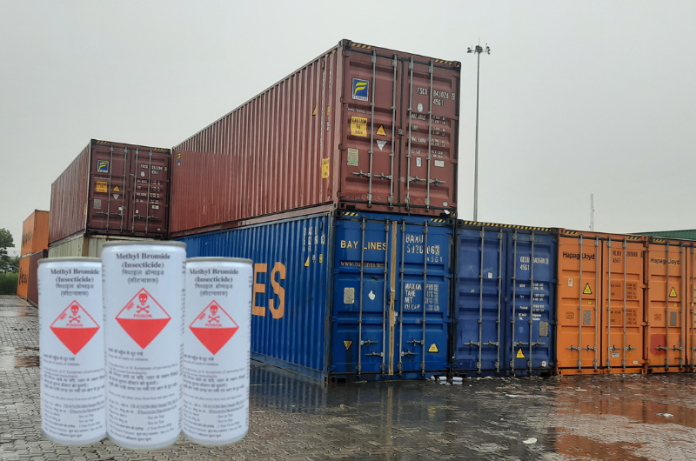Container fumigation is a process used to eliminate pests and other harmful organisms from cargo containers before shipment. This process is essential for maintaining the safety and quality of goods during transportation, and it is widely used in international trade. The following steps outline the general process of container fumigation:
- Preparation: Before fumigation, the containers should be properly prepared. All goods should be removed from the containers and any vents or openings should be sealed with tape. The containers should also be cleaned and emptied of any residual moisture to prevent the growth of mold.
- Selection of Fumigant: The type of fumigant used for fumigation depends on the type of pest and the goods being shipped. Common fumigants include methyl bromide, phosphine, and carbon dioxide.
- Application of Fumigant: Once the container has been prepared, the fumigant is introduced into the container through vents or other openings. The fumigant is then distributed evenly throughout the container to ensure complete coverage.
- Ventilation: After the fumigant has been applied, the container must be ventilated to remove any residual gas and allow the fumigated goods to be safely loaded. This is typically done by opening vents or other openings and allowing fresh air to circulate through the container.
- Monitoring: During the fumigation process, the concentration of the fumigant inside the container is monitored to ensure that it remains at a safe level. This is typically done with gas detectors or other monitoring equipment.
- Certification: Once the fumigation process is complete, the container is certified as being pest-free. A certificate of fumigation is issued and should be attached to the shipment documents for inspection at the port of destination.
It is important to follow all safety protocols and regulations when performing container fumigation to ensure the safety of workers, the environment, and the goods being shipped. Only trained professionals should perform container fumigation, and proper protective equipment should be worn at all times.



